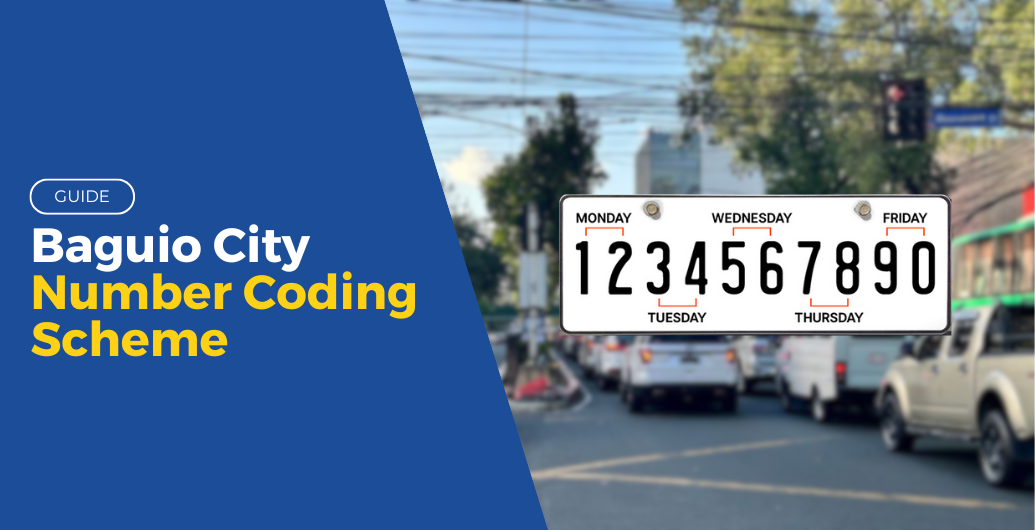Estimated reading time: 4 minutes
As Baguio City continues to attract tourists and new residents, the increasing number of vehicles on the road has led to significant traffic congestion. To address this issue, Baguio City has implemented a number coding scheme designed to reduce traffic volume and ensure smoother travel within the city. This guide provides a comprehensive overview of the coding scheme in Baguio City, its implementation, exemptions, and penalties.
Table of contents
What is a Number Coding Scheme?
A number coding scheme is a traffic management strategy that restricts vehicles from using specific roads based on the last digit of their license plate numbers. The goal is to reduce the number of vehicles on the road during peak hours, thereby alleviating traffic congestion. Initially, an odd-even scheme was used, but it has since evolved into a more refined system based on specific days of the week.
Implementation of the Number Coding Scheme in Baguio City
The Baguio City number coding scheme operates on weekdays from 7:00 AM to 7:00 PM. Here’s how it works:
| Number Code | Day Prohibited |
| 1-2 | Monday |
| 3-4 | Tuesday |
| 5-6 | Wednesday |
| 7-8 | Thursday |
| 9-0 | Friday |
For those without issued or received license plates, the last number of the conduction sticker will be used.
Also Read: GUIDE: MMDA Number Coding Scheme
Coverage of the Number Coding Scheme
The number coding scheme in Baguio City applies to the following major roads:
- Marcos Highway from the junction of Legarda Road to Baguio General Hospital Circle
- Legarda Road to the junction of Marcos Highway
- Kennon Road from BGH Circle to the junction of Military Cut-off Road
- Military Cut-off Road to Military Circle
- South Drive from Military Circle to Teacher’s Camp Road
- M. Roxas Road to Trancoville bridge
- Bokawkan Road (including a portion of Magsaysay Avenue below the flyover) from the junction of La Trinidad Road and Trancoville bridge to the intersection of Naguilian Road
- Naguilian Road from the junction of Bokawkan Road to the intersection of Abanao Street
- Abanao Street Extension to the junction of Yandoc Street
- Yandoc Street-PIO Baguio
Exemptions
Certain vehicles are exempt from the coding scheme in Baguio City:
- Chartered mini-buses for lakbay-aral or excursions
- Government-owned vehicles with red plates
- Vehicles of the Philippine Postal Corporation for mail delivery
- Armored cars for bank transfers
- Emergency vehicles (e.g., ambulances, fire trucks)
- Water delivery trucks for firefighting
- Service vehicles of public utility companies performing emergency repairs
- School services ferrying students during specific hours
- Vehicles of tourists participating in sanctioned events (with necessary documentation)
Suspension of the Number Coding Scheme
The number coding scheme may be suspended under specific conditions, such as:
- Public disturbances or natural calamities
- Major official celebrations or activities sponsored or co-sponsored by the City Government
Moreover, suspension of the scheme is executed through an Administrative Order issued by the City Mayor.
Parking Regulations
Vehicles prohibited from entering the number coding zone are also not allowed to park on roads or streets within the perimeter line from 7:00 AM to 7:00 PM, Monday to Friday. However, there are pay parking areas around the city where vehicles can be safely parked.
Penalties
Violating the number coding scheme will result in a fine. The driver’s license of the violator will be confiscated upon issuance of a citation ticket. The standard fine is Php 500.00, payable to the Office of the City Treasurer.
Final Thoughts
Whether you refer to it as the Baguio coding scheme, coding scheme in Baguio, or the Baguio City coding scheme, the goal remains the same: reducing traffic congestion for a better travel experience in the City of Pines. Stay informed and plan your trips accordingly to avoid any inconvenience.
Keep Reading: LIST: SSS Number Coding Scheme 2024

Leave a Reply